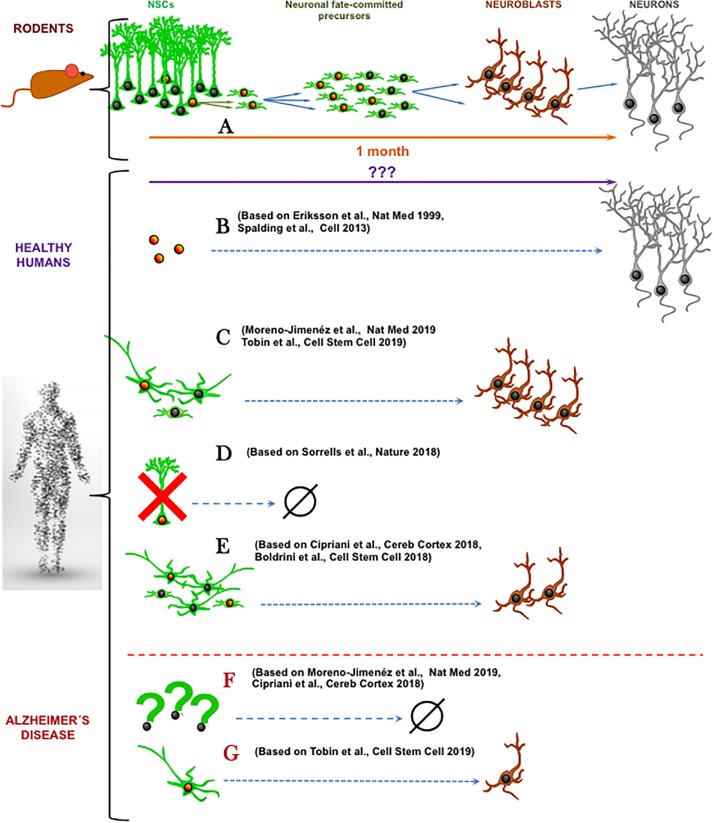FIGURE 1.
Schematic summary of recent research articles on human adult hippocampal neurogenesis. (A) In mice, a population of well-characterized neural stem cells (NSCs) generates neuronal-fate committed precursors that amplify their numbers through cell divisions and then differentiate into neuroblasts that maturate into neurons. (B) In healthy humans, cell-division dependent neurogenesis has been reported using radioactive carbon-based cell-birth dating (Spalding et al., 2013) and BrdU incorporation (Eriksson et al., 1998). (C) The abundant presence of both neural precursor like-cells and immature neurons (Tobin et al., 2019) or immature neurons (Moreno-Jiménez et al., 2019) has been shown, coexisting with cell division markers. (D) Total absence of cell proliferation, neural precursor like-cells and immature neurons has been demonstrated in the adult hippocampus (Sorrells et al., 2018). (E) Present, but reduced number of neural progenitor-like cells and immature neurons has been reported (Cipriani et al., 2018; Boldrini et al., 2018). In Alzheimer’s disease, neural precursor like-cells and immature neurons are greatly reduced (Cipriani et al., 2018; Moreno-Jiménez et al., 2019) (F) or still exist in more prominent cell populations (Tobin et al., 2019) (G). Orange nuclei indicate cell division while nuclei indicate not proliferative state. (Human shape Designed Freepik-Vilmosvarga).

